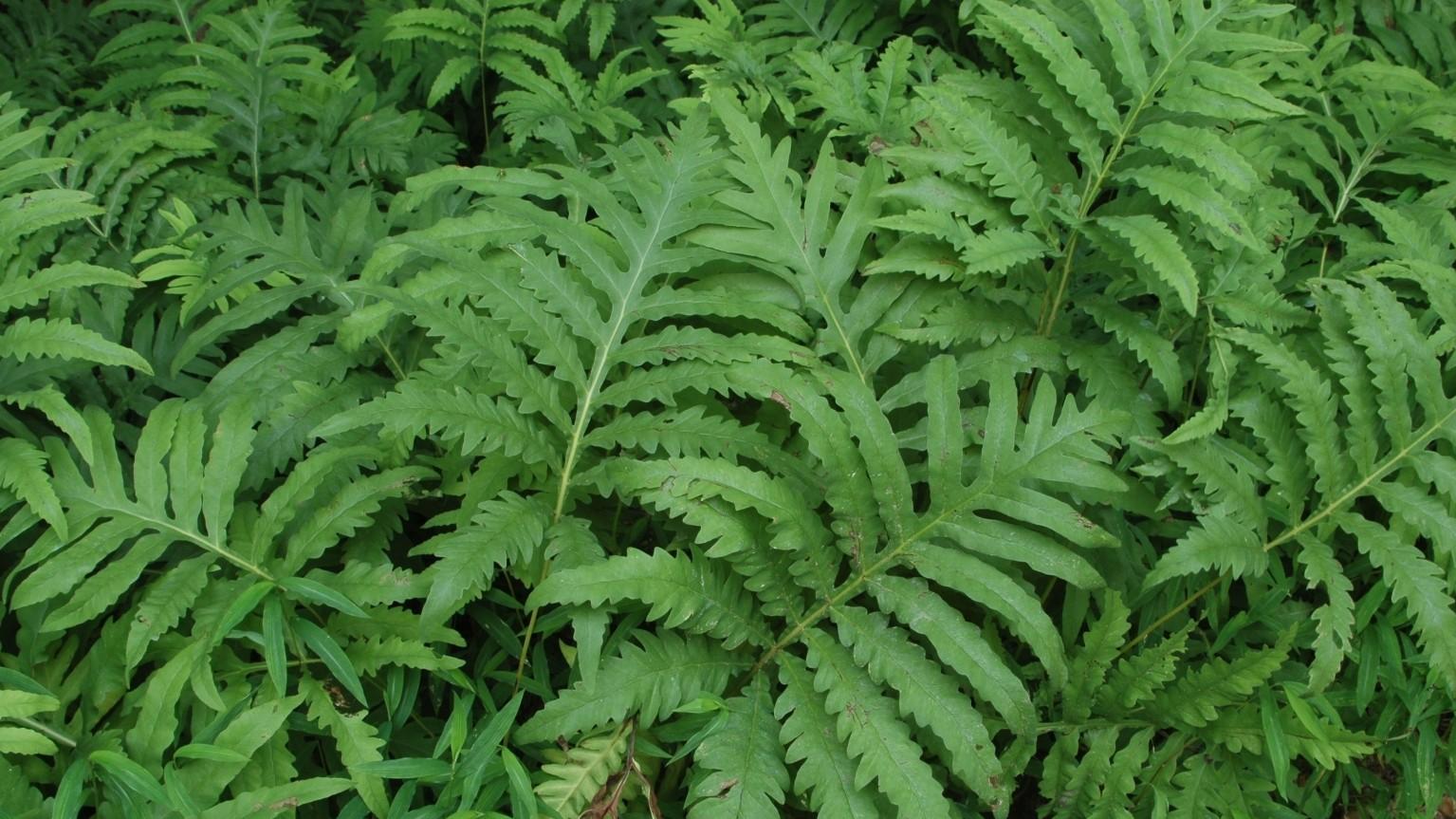This table offers some suggestions for groundcovers for different sites, however, there are many more options. Plants need to be able to grow on challenging sites, especially when used for slope or bank stabilization and as a grass substitute, are easy-to-grow, and relatively fast-growing. Invasive plants such as English ivy, Japanese pachysandra, and vinca should not be planted as they are known to move into and take over natural areas. It can take a few years for a groundcover to fill in. As the saying goes 'the first year they sleep, the second year they creep and the third year they leap'.
| Name (*deer resistant, N = Native) |
Full Sun |
Part Shade |
Dry Shade |
Stabilize Bank |
|---|---|---|---|---|
|
Allegheny spurge* |
No |
Yes | No | No |
|
(N) Ageratum, hardy |
Yes | No | No | No |
| Barrenwort* (Epimedium ssp.) | No | Yes | Yes | No |
| Blue star juniper* (Juniperus squamata ‘Blue Star’) |
Yes | No | No | Yes |
| No | Yes | No | No | |
| Catmint* 'Walkers Low' (Nepeta x faassenii 'Walkers Low') |
Yes | No | No | Yes |
| (N) Cinnamon fern* (Osmunda cinnamomea) |
No | Yes | No | Yes |
| (N) Christmas fern* (Polystichum acrostichoides) |
No | Yes | Yes | Yes |
| Comfrey 'Hidcote Blue' (Symphytum 'Hidcote Blue') |
Yes | Yes | Yes | Yes |
| Creeping thyme* (Thymus serpyllum) |
Yes | No | No | Yes |
| (N) Crested iris* (Iris cristata) | No | Yes | No | No |
| Deutzia 'Nikko'* (Deutzia gracilis ‘Nikko’) |
Yes | Yes | No | Yes |
| (N) Foam flower (Tiarella cordifolia) |
No | Yes | No | No |
| (N) Golden Groundsel or Golden Ragwort (Packera aurea) |
No | Yes | No | No |
| (N) Green and gold* (Chrysogonum virginianum) |
Yes | Yes | No | No |
| Lamb's ears* 'Helene von Stein' (Stachys byzantina 'Helene von Stein') |
Yes | Yes | No | Yes |
| (N) Maidenhair fern* (Adiantum pedatum) |
No | Yes | No | No |
| Mondo grass (Ophiopogon japonicus) |
No | Yes | No | No |
| (N) Moss phlox* (Phlox subulata) |
Yes | No | No | Yes |
| (N) Partridgeberry* (Mitchella repens) |
No | Yes | No | No |
| (N) Pennsylvania sedge* (Carex pensylvanica) | No | Yes | Yes | No |
| (N) Phlox, creeping 'Sherwood Purple' (Phlox stolonifera 'Sherwood Purple') |
No | Yes | No | No |
| Plumbago* (Ceratostigma plumbaginoides) |
Yes | Yes | No | Yes |
| (N) Pussytoes, Plantain-leaf * (Antennaria plantaginifolia) |
No | Yes | Yes | Yes |
| Sedge, Variegated Japanese* (Carex oshimensis 'Evergold') |
No | Yes | No | Yes |
| Sedum 'Angelina' (Sedum rupestre 'Angelina') |
Yes |
No
|
No | No |
| (N) Sensitive fern* (Onoclea sensibilis) |
No | Yes | No | No |
| Shore juniper* (Juniperus conferta) |
Yes | No | No | Yes |
| Solomon's seal, variegated (Polygonatum odorata) |
No | Yes | Yes | No |
| Sumac* 'Gro-Low' (Rhus aromatic ‘Gro-Low’) |
Yes | Yes | No | Yes |
| Sweet box* (Sarcococca hookeriana var. humilis) |
No | Yes | No | Yes |
| Willowleaf cotoneaster (Cotoneaster salicifolius repens) |
Yes | Yes | No | Yes |
| Winter jasmine* (Jasminum nudiflorum) | Yes | Yes | No | Yes |
| Wood spurge* (Euphorbia amygdaloides) |
No | Yes | Yes | No |
